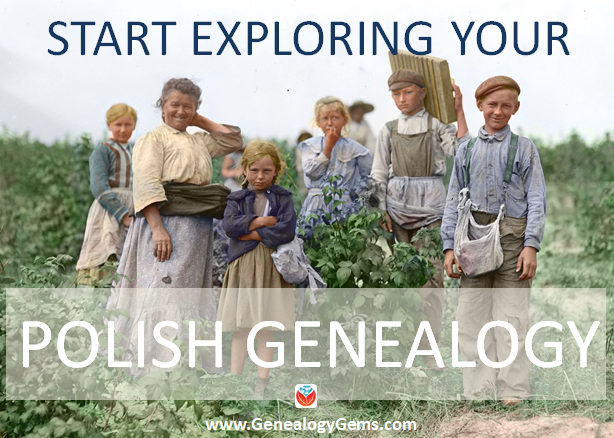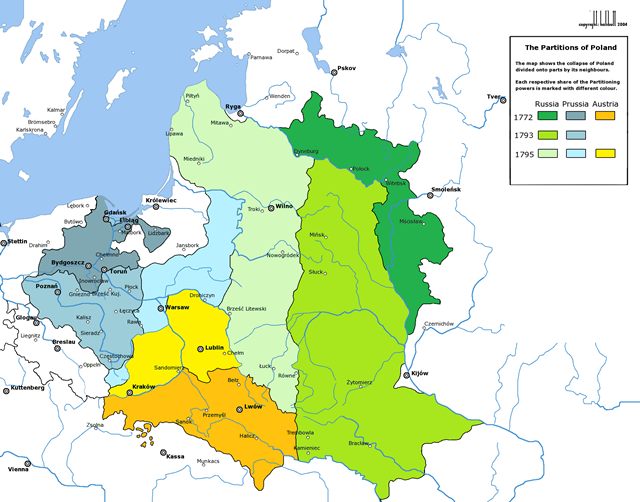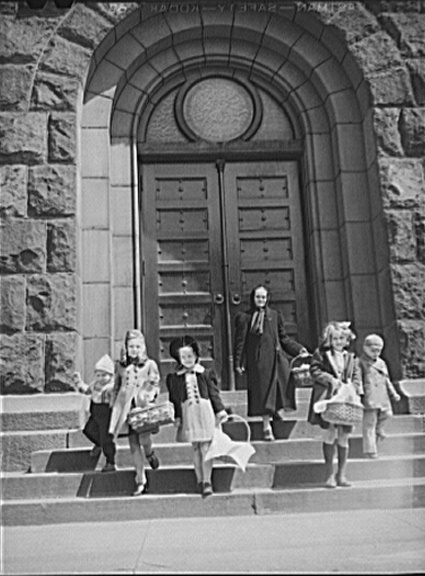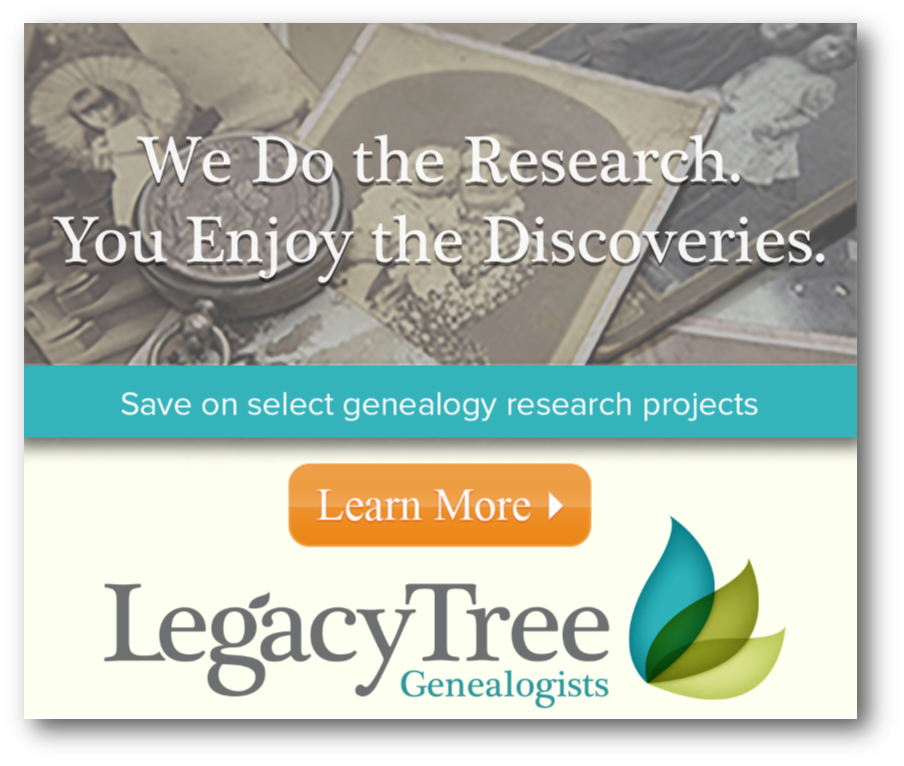Inspiring Family History Video Ideas Sent In By YOU
These family history video ideas and comments/questions sent in by Genealogy Gems listeners can inspire your own short videos. See how they script their stories, find royalty-free music soundtracks and more. Then visualize yourself in the director’s chair—what kind of...How a Genealogy Society Can Grow Membership
 Genealogy is growing dramatically in popularity. Multiple television shows depict family history discoveries, and the use of DNA to help folks climb there family tree has become mainstream. If genealogy is so popular, why is genealogy society membership declining, and how can we slow hat trend?
Genealogy is growing dramatically in popularity. Multiple television shows depict family history discoveries, and the use of DNA to help folks climb there family tree has become mainstream. If genealogy is so popular, why is genealogy society membership declining, and how can we slow hat trend?
Genealogy societies have traditionally been centered around genealogists coming together in person, sharing research success stories, and learning more about how to find the records and stories of elusive ancestors.
These days though it’s easy to get distracted by by online research and perceived short cuts. The newest generation of researchers started their search not in a library, but on a computer keyboard. The problem is that they often don’t know what they are missing when it comes to what genealogy societies have to offer.
One solution: show them the value with video!
Create Video Magic with Animoto
(Full disclosure: This post contains affiliate links and I will be compensated if you make a purchase after clicking on my links. Thank you for supporting the Genealogy Gems blog!)
One of my favorite video creation tools is Animoto because it helps you creates incredibly professional-looking videos in a shockingly short amount of time. And most importantly, Animoto requires no more technical skill than clicking, dragging, and dropping with a mouse.
Rather than seeing the Internet as the enemy of your society, embrace it and put it to work for it. Online video is terrific tool for:
- Creating awareness
- Promoting events
- Building your membership
- Providing genealogical educational information
- Sharing events with those who are unable to attend in person
just to name a few ideas.
See It for Yourself
Last year I had the pleasure of presenting a full day genealogy seminar in Fresno, California. Turning photos of the day into a video that could be used to build membership was a breeze With Animoto. I selected a design, uploaded my images and added text to help make the case. Here’s an example of a video I created for the Fresno Genealogical Society.
Getting the Word Out
A video like this can spread the word and reach prospective members in a variety of ways. Here are just a few ideas for how a genealogy society can grow membership using video to achieve their engagement goals:
- Download the video from the Animoto website and show it at your next meeting so visitors can envision reasons to return
- Embed the video your society’s website (just copy the code from Animoto and paste it on your webpage and the video will appear in a convenient video player)
- Share the video on social media sites like Facebook, Pinterest, Twitter, and Instagram to not only get views, but provide a super simple way for supporters to share it which will get your society more exposure.
Keys to Video Success
 Just a bit of planning can deliver great results. Here are my recommendations for how a genealogy society can grow membership and achieve promotional video success:
Just a bit of planning can deliver great results. Here are my recommendations for how a genealogy society can grow membership and achieve promotional video success:
- Keep it short – it took just 1 and 1/2 minutes to convey the answers to the who, what, where, and why questions folks may ask when considering a genealogy society in the Fresno area
- Let images do most of the talking – there’s no need for being verbose if you have energetic imagery that convey your ideas.
- Highlight the benefits – the big question potential members have is “why should I bother joining a genealogy society? Make sure you answer that question in your video
- Tell them at the beginning and end how to find you – repeating your website address and keeping it on the screen long enough to jot it down gives them what they need to contact you. And after all, that is the goal of your video.
How to Create Your Genealogy Society Video
We have lots of how-to video creation resources for you here at Genealogy Gems. Click here to find step-by-step instructions for creating videos on Animoto, and to see more examples of the role that video can play in your family history.
More Resources Reveal How a Genealogy Society Can Grow Membership
READ: Need a Genealogy Speaker? Here’s the Affordable Solution
Polish Genealogy: 4 Steps to Find Your Family History
Researching your Polish genealogy may seem a little intimidating at the start. Read these get-started tips from a Polish genealogy veteran at Legacy Tree Genealogists. Then you’ll know how to dive right into your Polish family history–and where to turn if you need a little help.

Thanks to Legacy Tree Genealogists for supplying this guest blog post. Legacy Tree employs researchers with a wide range of expertise. They asked their Polish expert, Julie, to share tips for finding Polish ancestors, based on her decades of experience.
If you’re an American researching your Polish ancestors, you aren’t alone. Polish Americans make up the largest Slavic ethnic group in the United States, second largest Central and Eastern European group, and the eighth largest immigrant group overall. So how do you begin tracing your roots in Poland?
Get Started: 4 Polish Genealogy Tips
1. Get to know the basics of Polish history.
Probably every Polish-American family has heard mention of the “border changes” that were supposedly the reason why Grandpa’s papers say he was from Austria, although everyone knew he was Polish. What many people don’t realize is that Poland did not exist as an independent nation from 1795 until 1918. Historically, Polish lands were partitioned among the Russian, Prussian, and Austrian Empires, and ethnic Poles were citizens of one of those three nations. This is why you might see your Polish ancestors stating Russian birth on the 1910 U.S. census, but Polish birth on the 1920 U.S. census, after Poland was reestablished as an independent nation.

By Rzeczpospolita_Rozbiory_3.png: Halibuttderivative work: Sneecs (talk) – Rzeczpospolita_Rozbiory_3.png, CC BY-SA 3.0, click to view on Wikipedia.
2. Determine your Polish ancestor’s religion.

Buffalo, New York. Children of the Polish community leaving church with baskets of food on the day before Easter. Library of Congress photo; digital image via Wikipedia. Click to view.
Although we in the U.S. are accustomed to the separation of church and state, this was not the case in many places. In Poland, it was common for priests, ministers, or rabbis to act as civil registrars, blending ecclesiastical and government authority as they recorded births, marriages, and burials. Although this was the protocol in all three partitions for the majority of the 19th century, the exact span of dates in which this was true vary based on the partition in which your ancestors lived, and greatly affects where you should be searching for the records you need. In “Russian Poland,” for example, civil record keeping began in 1808 with Roman Catholic priests acting as civil registrars for people of all faiths (not just Catholics). Beginning in 1826, each faith was allowed to keep its own civil records using a paragraph-style format that remained relatively stable through the 1930s. Civil registration that was independent of any religious organization did not begin until 1945.
The fact that civil copies of church records were made increases the likelihood that records survived for your ancestor’s town. There’s a persistent myth that “all the records were destroyed in the wars,” but that’s simply not true in most instances. Existing records for some locations date back to the 1600s, but in other places surviving records are sparser.
3. Use U.S. records to determine your ancestor’s precise place of origin.
Grandma may have said that her father came from Warsaw, but most of our ancestors came from small villages, not large cities. It’s more likely that her father was using Warsaw as a point of geographic reference to give people a rough idea of where he lived, since others are unlikely to recognize the name of a small village. This means that you most likely won’t find his birth record by looking for it in Warsaw, but it also leaves you in the dark about where to look instead.
 What kinds of records are most likely to indicate a precise place of birth? Passenger manifests and petitions for naturalization (if dated after 1906) are great sources for this information. If your Polish ancestors were Catholic, church records from the parish they attended in the U.S. are much more likely to contain specific place of birth than their civil equivalents. These include marriage records for immigrants who married in the U.S., baptismal records for U.S.-born children of immigrants, and church death/burial records.
What kinds of records are most likely to indicate a precise place of birth? Passenger manifests and petitions for naturalization (if dated after 1906) are great sources for this information. If your Polish ancestors were Catholic, church records from the parish they attended in the U.S. are much more likely to contain specific place of birth than their civil equivalents. These include marriage records for immigrants who married in the U.S., baptismal records for U.S.-born children of immigrants, and church death/burial records.
Click here for an article about a woman who found her Polish Catholic grandparents’ church marriage record–and with it their overseas birth place–at St. Stanislaus parish in Buffalo, NY. You’ll also learn tips for finding Catholic church records in the U.S.
If your ancestors were Jewish, check cemetery records for mention of any landsmannschaft to which they might have belonged. Landsmannschaften were fraternal aid societies organized by immigrants from the same town in Europe, and they frequently purchased large burial plots for their members.
4. Use a gazetteer to determine the parish or registry office that served your ancestor’s village.
Depending on which partition your ancestors came from, some good gazetteers include:
- The Słownik geograficzny Królestwa Polskiego i innych krajów słowiańskich, or Geographical Dictionary of the Kingdom of Poland and Other Slavic Countries, published between 1880 and 1902 in 15 volumes. The SGKP is written in Polish.
- The Skorowidz Królestwa Polskiego, which includes all of Russian Poland (officially known as the “Królestwo Polskie” or Kingdom of Poland) published in 1877. The SKP is mostly written in Polish with some text in Russian.
- Kartenmeister, an easy-to-use online gazetteer for “German Poland” that covers East Prussia, West Prussia, Brandenburg, Posen, Pomerania, and Silesia. Kartenmeister can be searched using either the German or the Polish name for a town.
- The Galician Town Locator, offered by Gesher Galicia, is another easy-to-use resource that covers the historic Galicia region, which was a part of the Austrian Empire that is now split between Poland and Ukraine.
- The JewishGen Gazetteer is a phonetic gazetteer to assist in identifying the correct location in cases where your ancestor’s place of origin is misspelled on U.S. records. It covers areas throughout Central and Eastern Europe.
Once you have correctly identified both your ancestor’s place of birth and the location of his place of worship or civil records office, you’re ready to make the jump back to records in Poland.
Get Expert Help with Your Polish Genealogy Questions
 We at Legacy Tree Genealogists would be honored to assist you with any step along the way in your journey to discover your ancestral origins, including onsite research if needed. Our experts have the linguistic and research skills to efficiently find your family. Contact us today for a free consultation.
We at Legacy Tree Genealogists would be honored to assist you with any step along the way in your journey to discover your ancestral origins, including onsite research if needed. Our experts have the linguistic and research skills to efficiently find your family. Contact us today for a free consultation.
Exclusive offer for Genealogy Gems readers: Save $100 on a 20-hour research project using code GG100, valid through October 31st, 2017.
